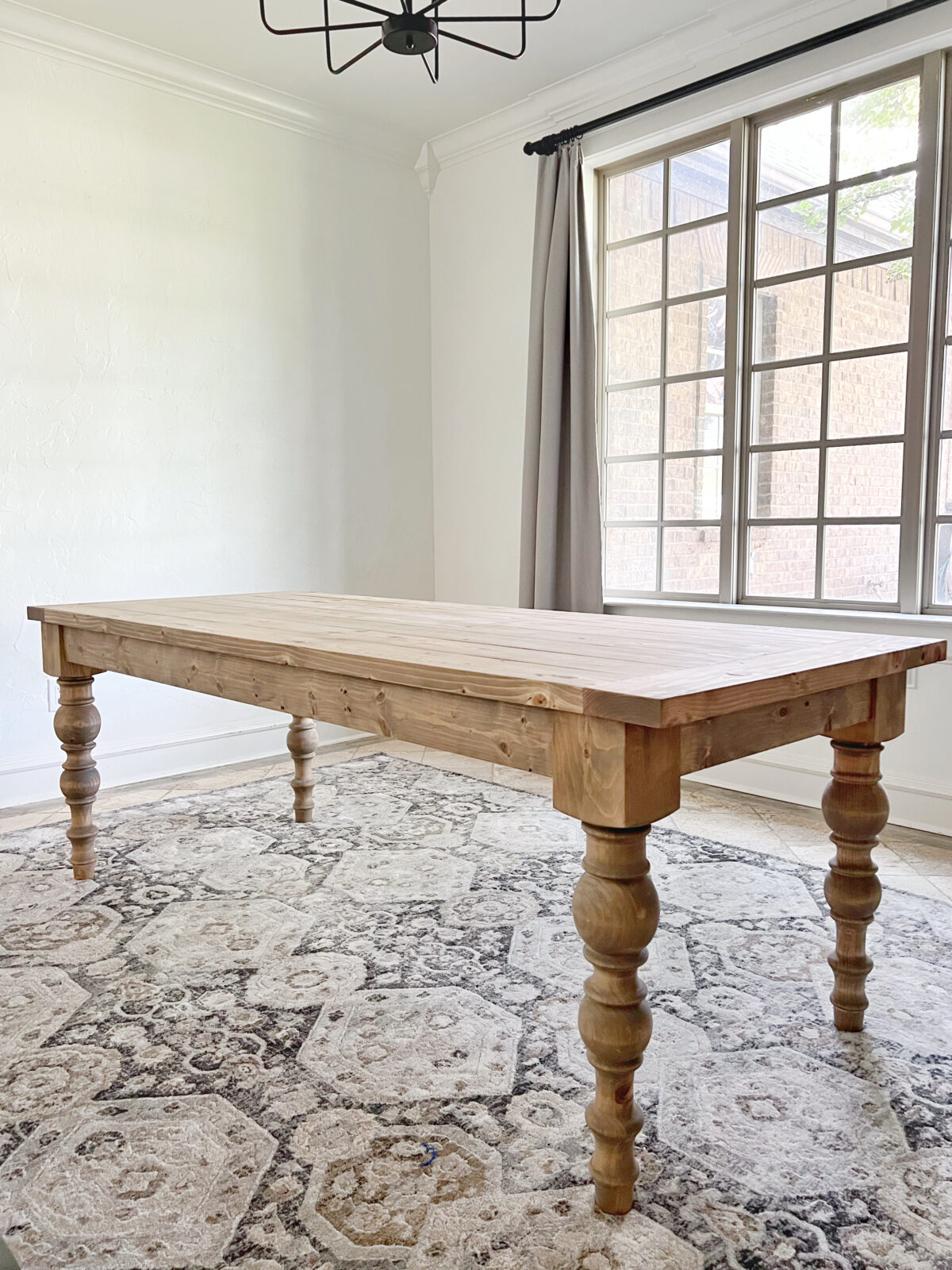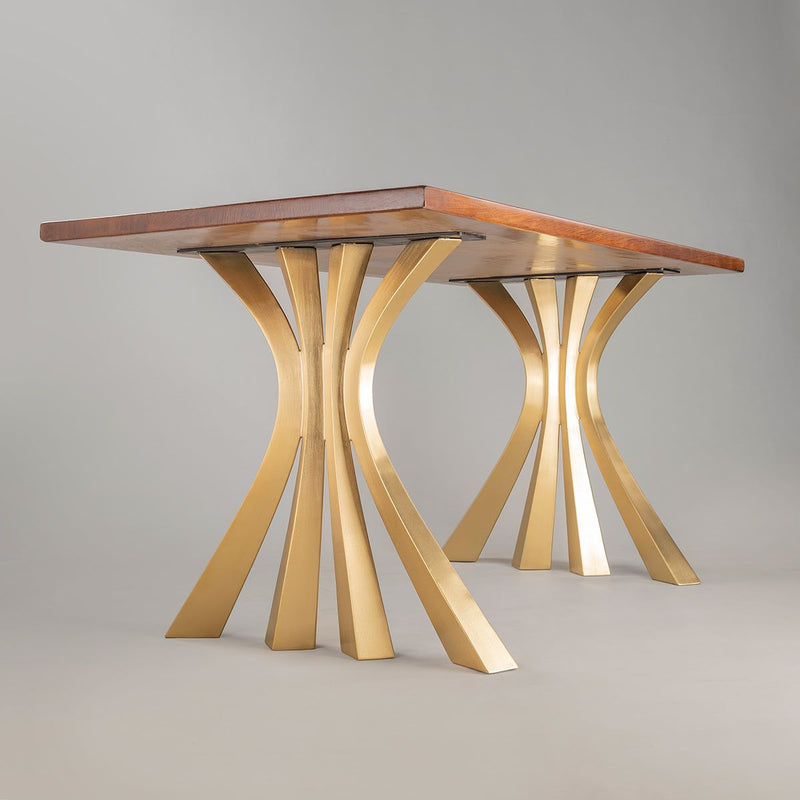Discovering Different Layouts for Dining Room Table Legs to Match Your Aesthetic
Discovering Different Layouts for Dining Room Table Legs to Match Your Aesthetic
Blog Article
Picking the Perfect Table: What Styles Job Best for Your Home?
Choosing the perfect eating table for your home can be a nuanced procedure that stabilizes aesthetic appeals and capability. To navigate these choices efficiently and find a table that genuinely enhances your home, take into consideration the following elements in detail.
Examining Your Room
Reviewing the measurements and design of your dining location is a crucial first step in choosing the excellent table. Begin by measuring the length and width of the space, representing doorways, windows, and other architectural functions that might affect table placement. This makes sure that your table not just fits yet likewise enables for comfortable motion around it.
Consider the variety of people you generally delight. A table ought to accommodate your household's everyday requirements while supplying adequate flexibility for occasional guests. Generally of thumb, allocate at least 24 inches of table width per individual to ensure a comfortable eating experience.
It's likewise crucial to maintain appropriate clearance around the table. Ideally, there must be at least 36 inches in between the table edge and wall surfaces or other furnishings, enabling very easy access and movement. For spaces where chairs with arms or added storage devices like buffets are included, boosting this clearance to 48 inches is advisable.
Lights and ambience play significant duties. Make sure that your eating table straightens with existing lights components or plan for adequate lighting options. This extensive spatial analysis warranties that your eating table not just fits literally but additionally integrates with your room's general functionality and visual.
Popular Table Styles

Standard eating tables commonly feature ornate details, rounded legs, and rich wood surfaces, stimulating a feeling of classic sophistication. They are ideal for homes with classic decor or those looking to include a touch of refinement to their eating area.
Modern eating tables focus on simplicity and clean lines, often integrating materials like glass and metal. These tables are perfect for contemporary spaces, supplying a smooth and minimalist look that matches minimal style viewpoints.
Rustic dining tables, on the various other hand, highlight all-natural products and a handmade appearance - dining room table legs. They typically feature recovered wood and a distressed surface, developing a warm and inviting ambience. These tables work well in farmhouse-style homes or those looking for a relaxing, natural feeling
Industrial eating tables combine resources such as steel and timber, frequently showcasing an utilitarian visual. This design is fit for loft spaces or city rooms, adding a touch of rugged appeal and durability to the eating experience.
Each style supplies distinctive benefits, making it important to choose one that aligns with your home's general style and your personal choices.
Product Options
When selecting a table, the selection of product plays an important function in determining both the anonymous table's looks and functionality. Wood, metal, glass, and composite materials each deal distinct benefits and difficulties, making it vital to align the product with your home's decoration and lifestyle needs.
Wood is a timeless and versatile alternative, offered in selections such as oak, walnut, and mahogany. Known for its sturdiness and warmth, timber enhances both standard and contemporary interiors. It calls for regular maintenance to prevent scratches and warping.
Metal tables, often crafted from stainless-steel, light weight aluminum, or functioned iron, are praised for their modern allure and toughness. They are especially matched for commercial or minimal setups but can be susceptible to dents and might really feel chilly to the touch.
Glass table bring an air of sophistication and visibility, suitable for smaller rooms as they create an illusion of even more space. While simple to tidy, glass can be vulnerable to smudges and needs careful handling to prevent chips and splits.
Composite materials, such as MDF and plywood, offer cost-efficient and adjustable solutions, though they may do not have the longevity of all-natural products. Picking the best material ensures your table is both a functional possession and a visual joy.
Shape and Dimension Factors To Consider
After determining the proper product for your dining table, the next factor to consider is choosing the best shape and dimension to fit your space. Alternatively, rounded tables foster a feeling of affection and are excellent for smaller dining areas, urging conversation by removing edges and making everybody really feel similarly consisted of.
Size is just as vital and must be determined by both the space's measurements and the variety of individuals you plan to seat on a regular basis. As a guideline of thumb, assign at the very least 24 inches of table width per person to guarantee comfortable dining. Additionally, take into consideration the table's clearance space: there should go to least 36 inches in between the table side and the wall surfaces or various other furnishings. This makes sure that diners can move conveniently without really feeling cramped. Expanding tables use adaptability if you frequently host larger celebrations, providing additional seats when required without inhabiting added room daily. Picking the appropriate form and dimension makes click here to read certain both practicality and visual consistency in your eating location.
Matching Your Style
Picking a dining table that integrates with your existing design is crucial in creating a natural and welcoming space. A smooth, minimal table with clean lines is excellent for a contemporary home, while a vintage, luxuriant table suits a much more typical setting.
Shade and product are equally substantial. If your design features warm tones and all-natural products, consider a wooden table to improve the natural feel. On the other hand, a glass or steel table might be better in a room dominated by amazing shades and commercial components. Pay attention to the surface, as it needs to mirror other furniture and fixtures to preserve consistency.
A rough-hewn, reclaimed go to this website timber table can include character to a rustic room, while a refined marble surface can elevate a luxurious eating area. A well-matched dining table not just improves visual allure yet likewise enriches the total eating experience.

Verdict
Selecting the optimal table demands careful consideration of area, design, products, shape, and size (dining room table legs). Standard tables enhance timeless insides with abundant wood finishes, while modern tables fit contemporary setups via glass and steel. Rustic layouts present heat using natural materials, and industrial styles enhance urban environments with raw aspects. Balancing the table with existing decoration makes sure both capability and aesthetic allure, adding to a natural and cosmetically pleasing eating location.
Report this page